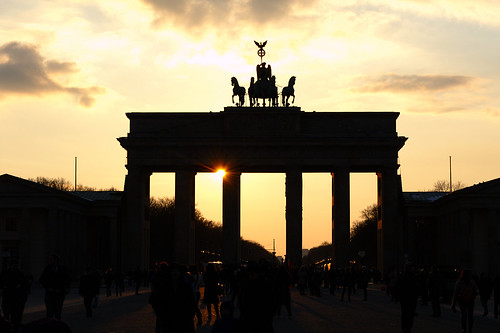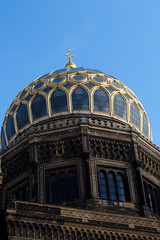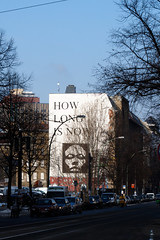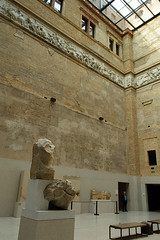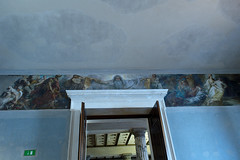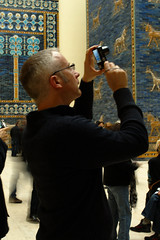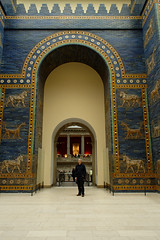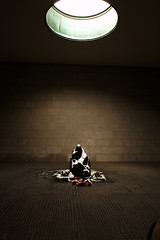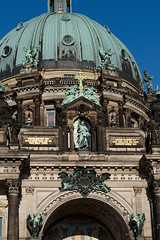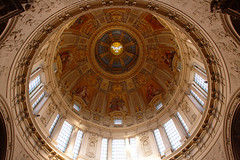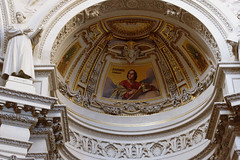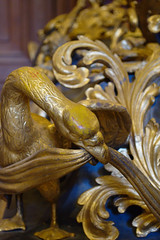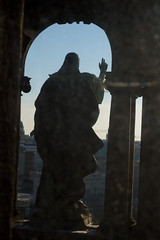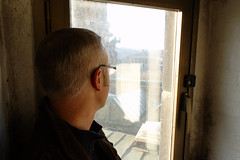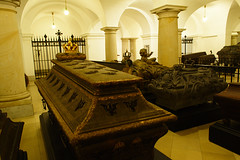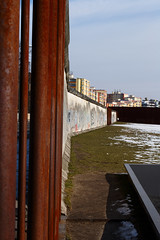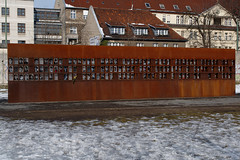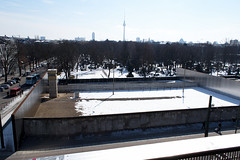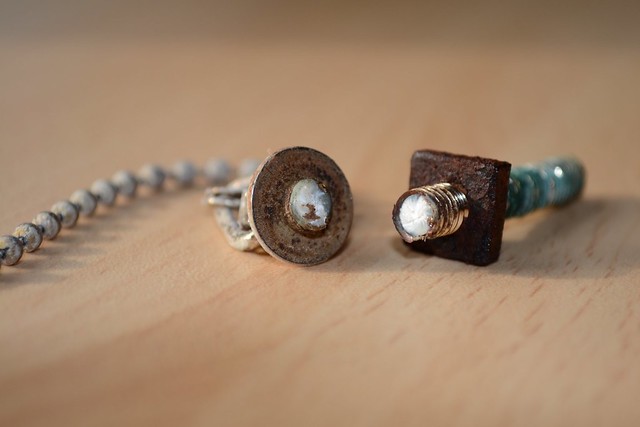Late Imperial China: The Ming and Qing Dynasties
This last chapter of the book covers about 550 years from the start of the Ming Dynasty in 1368 through to the overthrow of the last Qing Emperor in 1911 (plus a coda about the rest of his life up to his death in 1967).
Orientation Dates: Battle of Agincourt was in 1415. The printing press was invented in Europe around 1440, and Caxton brought it to England in 1476 (post). Christopher Columbus discovered the Americas in 1492, also Rodrigo Borgia became Pope (post) in this year. Henry VIII ruled from 1509-1547. Martin Luther nailed his treatise to the church door in 1517. Elizabeth I ruled from 1558 to 1603, the Spanish Armada was in 1588. Union of the Crowns in 1603 when James VI & I comes to the throne of England, Act of Union creating Great Britain in 1707. Charles I beheaded in 1649. Glorious Revolution in 1688. South Sea Bubble in 1720 (post). US independence declared in 1776. War between UK & US in 1812 (post). Victoria ruled from 1837 to 1901.
The Ming Dynasty
The Ming Dynasty were the last Chinese Emperors of China, and their era was a reaction against the foreign rule of the Mongol Yuan immediately before them. The founder of the dynasty was a peasant (Zhu Yuanzhang) who became the leader of one of the insurgent groups during the civil wars at the end of the Yuan Dynasty period. He was only the second peasant to become Emperor, which he did in 1368 – the first was the founder of the Han Dynasty, which must’ve seemed like a nice omen to the people of the time (if they knew that). He was pretty conservative, and authoritarian, and he concentrated on promoting orthodox Confucian values. His successor in 1398 was his grandson – his oldest son had predeceased him, so the succession passed to his son’s son. However all Yuanzhang’s sons had been given territories around the Empire and command of armies, and unsurprisingly when the new Emperor started to reduce his uncles’ power bases this lead to rebellion and the senior of these uncles overthrew him to become the Emperor Yongle ruling from 1402 to 1424. And that’s pretty much the last of the individual Emperors of the Ming Dynasty that the book mentions – others might be mentioned in passing but the rest of this section is devoted more to the themes of the era. Which leaves about 200 years worth of nameless Emperors until the fall of the Ming in 1644.
As I said, one of the themes was the focus on making China “properly” Chinese again, after the century of Yuan rule. Part of this was an emphasis on codifying the rules, bureaucracy and social hierarchy of the country. The first Ming Emperor wrote the Great Ming Code (amongst many other pieces of legislation) which was a penal code specifying how the five traditional punishments should be applied to specific transgressions. He also commanded that this code could never be changed (because he felt he’d got it right and that social change could only be bad) – the book doesn’t say if it did stay the same through the whole 300 years of the Ming era. The bureaucracy was extremely organised, with officials categorised into ranks and types. They became officials via the traditional examination system, which during the Ming Dynasty became more & more constricted in curriculum and stylised in form. Scholars were the elite, and this was the only way to move upward in society, so any family that could afford to educate a son for the exams would do so.
During the Ming Dynasty the capital of China was moved to Beijing where it remains. This was started during Yongle’s reign and took forty years to accomplish. Surprisingly for a dynasty that was emphasising how they were not the Yuan it was built to the blueprint of the Yuan city that had been near there before. The Forbidden City is the name of the Ming Imperial Palace complex that was built in Beijing at this time. As well as being the residence of the Emperor it and its architecture had symbolic importance, and it held ritual altars. It was also the place where officials met with the Emperor and where the official business of government took place. The Forbidden City was built to be impressive, and to awe the officials and foreign dignitaries that came to have audiences with the Emperor.
The Emperor Yuanzhang was not keen on foreign adventures – he re-conquered China and that was it. He tried to encourage his successors to keep to these ways, but the Emperor Yongle had different policies. He sent out several fleets under the command of Zheng He in the early 1400s to visit foreign countries – they definitely went to India, and at least one reached the East African coast visiting cities in both modern Somalia & modern Kenya. An aside in this book next to a picture of Chinese map says that there are claims that one of Admiral Zheng He’s fleets reached the Americas & this map (which does show a recognisable looking American coastline) is thought to prove it. But it says this in such a way as to make it clear the author of this bit doesn’t believe it for a second 😉 I’ve read a book previously about this (“1421: The Year China Discovered the World” Gavin Menzies) and even though I read it a long time ago I’m sure Menzies sounded convincing when he talked about the fleet finding the Americas. These fleets carried gifts for the rulers of the places they went to – the purpose wasn’t trade but tribute between countries.
Yongle also lead several major military campaigns into Mongolia – he died in battle during the fifth of these in 1424 and subsequent Emperors were not as interested in the world outside China as he had been. Although having said that, some Emperors did try & lead campaigns into Mongolia that weren’t successful – the book mentions an Emperor Yingzong who got captured by the Mongolians in 1449, so the officials in Beijing put his brother on the throne rather than ransom him. It says the Mongolians gave him back unharmed, which first seems a bit odd (wouldn’t they kill him if no ransom was forthcoming to teach the Chinese a lesson?) and secondly what would the Chinese do about having two “legitimate” Emperors? Sadly the book doesn’t say.
Trade with foreign nations during this period was mostly by sea – the collapse of the Mongolian empire had destroyed the safety of the overland trading routes. Officially the Ming Dynasty prevented or controlled trade, but in actual fact it went on semi-officially or unofficially in the seas to the south of the country. This unofficial trade was significant in the Chinese economy bring lots of silver into the country from the New World via the Europeans. There was also a lot of piracy – both by Chinese ships and by international ships (the Chinese mostly blamed the Japanese but there were a lot of countries involved including growing numbers of Western ones). In terms of cultural exchange the book only really talks about the Jesuit presence in China at this time – which seems to’ve both been significant and also not to’ve ultimately gone down well with the Pope. The Jesuits on the ground, so’s to speak, tailored their message to the culture they were in which lead to the Emperor removing Christianity from the list of “ruinous religions” that people weren’t supposed to follow. But it also lead the Pope to condemn the “Chinese Rites” and to ban the sorts of accommodations that the Jesuits had made (which decision wasn’t reversed until the 20th Century).
The Dynasty came to an end in tragedy, sparked by growing unrest and failed reforms of the tax system. The population of the country was growing, and the regime’s desire to change nothing from a vision of a golden age of a rural Confucian past wasn’t dealing well with the realities of the country. Finally a rebel army took Beijing and the Emperor Chongzhen first killed his concubines in a drunken rage and then hung himself the following morning. The Manchu Qing Dynasty were the eventual victors in this period of unrest.
The Qing Dynasty
I feel this should be subtitled “Finally the Jurchen Get Their Chance” 😉 To recap – the Jurchen were a group of northern tribes who conquered northern China during the time of the Song Dynasty (post) and ruled it as the Jin Dynasty. They didn’t manage to conquer southern China before the Mongols swept in and conquered them. In the late 1500s the Jurchen people were reunified under Nurchai a man whose father and grandfather were killed during a massacre of a Jurchen village carried out by the Ming army. In 1618 Nurchai (ruling as Khan of the state of Jin) declared war on Ming China. His son Hongtaiji succeeded him as Khan in 1626 and continued the military expansion. After 10 years he changed the name of the dynasty to Qing, and coined the term Manchu to describe the inhabitants of the Qing state at that time (primarily Jurchens but also the inhabitants of the northern territories they had conquered, including some Chinese).
In 1644 the Qing took Beijing a year after Hongtaiji’s death, and his son Shunzhi was the new Emperor of China. It took a while before all of southern China was under Qing rule, but eventually the Qing ruled over a much larger territory than Ming China had covered. Shunzhi was a child Emperor under his mother’s regency (she was a descendent of a brother of Genghis Khan and the book refers to her as “strong-minded”). Shunzi died young, and his second son Kangxi inherited the throne at the age of 15.
Kangxi ruled for 61 years from 1662 to 1722 and it is he that consolidated the rule of the Qing over China. He successfully put down a rebellion by rulers of the southern parts of China (who had been prominent under the Ming Dynasty but initially surrendered to the Qing before rebelling later). He also annexed Taiwan, which was a Ming loyalist stronghold at the time. And he expanded the empire in the north & northwest to a point where it touched on to Russian territory. There were some skirmishes, but matters were resolved with the Treaty of Nerchinsk in 1689 which determined the border between the two empires. The book has an interesting aside here – this is apparently the first & last time imperial China signed a treaty with a foreign power as an equal. I suspect some mythologising of this as a tipping point for the beginning of the end for China (the subsequent treaties with Western powers had China as very firmly the junior & beaten down partner), even though previous treaties weren’t always imbalanced in China’s favour.
Kangxi was succeeded by his fourth son amidst rumours that his will had been forged so that Yongzheng could “steal the throne” from his brother. Yongzheng ruled for 13 years, and turned out to be a hard-working and competent Emperor. He in turn was succeeded by his 25 year old son, Qianlong, who had been a favourite of his grandfather Kangxi’s. This lead to Qianlong taking an oath that as an act of filial piety if he ruled for 60 years he would abdicate so as not to reign longer than the great Kangxi. At his age, in 1736, it must’ve seemed like an empty promise – something fine sounding that wouldn’t matter in the long run. However he lived to 89 years old, and had to abdicate in 1795 so as to fulfil his vow. And then the book strongly implies he back-seat drove the first four years of his son’s reign.
The golden age of the Qing was the first century or so of their dynasty, and even by the last couple of decades of Qianlong’s reign the empire had begun to go into decline. Partly this was a consequence of a booming population, and the difficulties in feeding them. And the efforts of the Qing regime to alleviate the problems only served to make them worse. To try & grow more food new farming techniques & crops were encouraged. Chinese people were encouraged to migrate from China proper into the new western territories. Both of these served to increase the population boom, and the migration in particular caused environmental & political problems up to the present day.
Qianlong was the emperor that the British met with their first diplomatic mission, when he was 83 and nearing the end of his reign. There was somewhat of a culture clash – King George III offered trading rights & an exchange of ambassadors, Qianlong magnanimously allowed the diplomats to present tributary gifts to him on his birthday. There wasn’t an immediate reaction to this by the British because they were otherwise engaged (in the Napoleonic Wars), but they didn’t forget about China’s refusal to deal with them as equals.
Trade with European countries was a very important part of the Chinese economy & was also tightly controlled. At first the Kangxi Emperor permitted trade in four cities but later it was restricted to Canton, and the Europeans weren’t allowed to trade direct with Chinese customers but instead thre were government intermediaries. The major export to Britain was tea, which China had a monopoly on, and it was paid for in silver. The trade deficit meant that Britain was running out of silver to pay with, and so here we get to the British-behaving-badly part of the story (and this is also where the whole thing gets quite complex, hopefully I’m not about to grossly misrepresent it!). The East India Company started to sell opium to the Chinese to reduce the deficit, and actually swung the balance the other way – now the British were importing so much opium that silver was leaving the Chinese economy. For that reason & because of the effects of increasing numbers of Chinese becoming opium addicts the Chinese confiscated & destroyed the British stock of opium in China in 1839. And so the British declared war on China for this insult, defeating the Chinese in 1842 and forcing them to sign the Treaty of Nanking. This was the first in a series of “unequal treaties” where the Chinese gave up controls over their trade and paid reparations to the victors. There was another war not long after where France (and to a lesser extent the US and Russia) also got involved, ending in the Treaty of Tianjin where more European countries got trade rights in China and China ceded land to the British & to Russia.
The Chinese empire was by now in a sorry state after defeats & humiliations. In the second half of the 19th Century various rebellions broke out – the most significant was the Taiping Rebellion. At first the Europeans were on the side of the rebels because they were to some extent Christians (very unorthodox ones tho). But later when the Taiping opposition to opium became more problematic the Westerners backed up the Qing government. Forcing more concessions from them afterwards.
From the 1860s to the 1890s the Qing regime attempted to both Westernise & strengthen their political & military power. But it proceeded too slowly to have much effect (the Chinese lost wars to the French over Vietnam and the Japanese over Korea during this period). And too fast for the conservative forces in the regime, including the Dowager Empress who engineered a coup in 1898. During this period as well the various Western powers were dividing up China between them into spheres of influence, although China never quite became a colony of any of them. The Boxer Rebellion of 1900 started as a reaction to both the deteriorating power of the Qing government and as a response to the increasing foreign power in the country. But then the rebels were manipulated into supporting the Qing against the foreigners, and were invited into Beijing to join with the Qing army – the Dowager Empress declared war on all the Western nations simultaneously. Whilst that displays great chutzpah, it doesn’t seem to me to display great amounts of sense – and an allied force of about 20,000 troops entered Beijing and defeated the Qing troops & rebels killing about 50,000 Chinese in the process. The imperial court fled, and the Boxer Protocol was enforced which gave the Western nations yet more access and control over China. And really that was the beginning of the very end for imperial China.
In 1908 the Emperor and the Dowager Empress both died, and 2 year old Puyi became Emperor. In 1911 the Xinhai revolution succeeded and declared the establishment of the Republic of China. Puyi’s uncle’s widow abdicated on his behalf. The rest of his life seems rather sad – at first he was Emperor still but only inside the Forbidden City. Later he fled to Manchuria and ruled there, propped up by the Japanese. After the Second World War he spent a while in prison, then lived much like an ordinary citizen in China until his death in 1967.
The Book in General
So I’ve got to the end of the book! My thoughts overall are that I’ve learnt a lot, but it’s far from being the best quality book I’ve read. Quite a lot of typos and errors of that sort, at least one point where there’s a sentence that never gets finished because when you turn the page you’re into a new section. It also could’ve done with a firmer editorial hand in terms of content – it’s written by a team of about 20 authors who are listed in the front of the book, but there isn’t any indication who wrote what bit. And it doesn’t always feel like anyone came along afterwards to make sure the separate sections worked in the context of the whole book. For instance in this last chapter there were three explanations of the line of succession between the first three Ming Emperors in three successive sections. Or in the previous chapter there was a bit where first the book discussed at length the ways that Song China traded with and had cultural exchange with the rest of the world, followed a page later by a statement that Song China was isolated from the rest of the world.
The book also could do with more or better maps – several times I had to look up a map in another book to figure out what this one was talking about. And at various times the name of an Emperor or other figure would be mentioned and put in context by a reference to someone else – who wasn’t mentioned before or after that one time. I felt a book that’s presenting itself as an entry-level book on a subject should take a bit more care to be self-sufficient.
However, having said all that I do now have a much better grasp of the sweep of Chinese history and that was the point of reading the book 🙂
And finally, this is the first book I’ve done this “write an essay on each chapter” series of blog posts for. It’s definitely slowed me down in reading it but I think it’s done so in a good way – effectively I’ve read each chapter twice, once to read it and once skimming through while I write it up. I also remember far more of the start of the book than I otherwise would’ve. So as experiments go, I think this was a success 🙂
The posts have possibly got a bit long, however – I’m not sure if I maybe need to split things up more (I can write multiple posts about a chapter even if I read the chapter in one go) or work on writing more concisely. Or maybe just stick with whatever length of post I end up with. Something to think about.
Next up will be a selection of fiction because I’ve got too many books out of the library at the moment, then on to another book about China that I’ve borrowed from my Dad (and it covers the three Qing Emperors Kangxi, Yongzheng and Qianlong which works out nicely for following this book).
